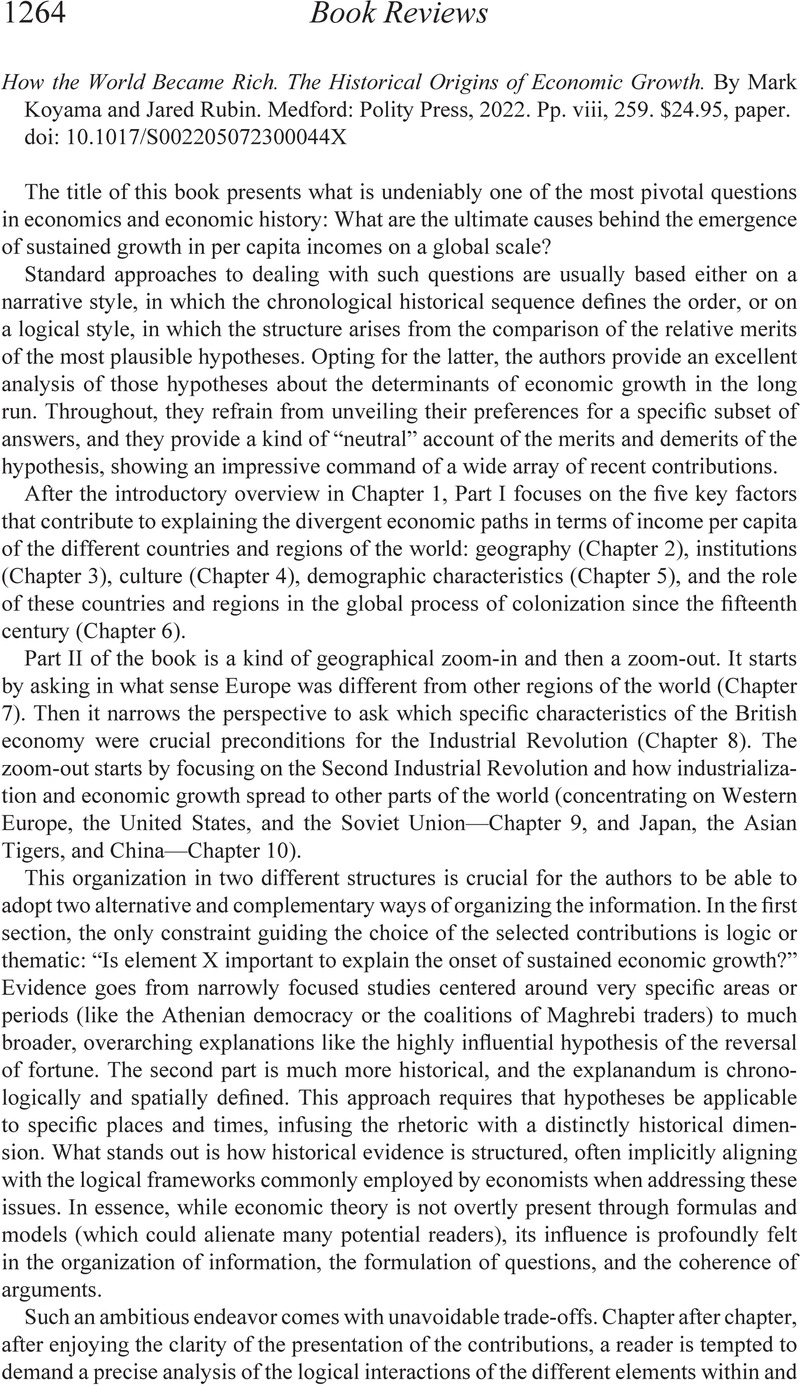No CrossRef data available.
Article contents
How the World Became Rich. The Historical Origins of Economic Growth. By Mark Koyama and Jared Rubin. Medford: Polity Press, 2022. Pp. viii, 259. $24.95, paper.
Review products
How the World Became Rich. The Historical Origins of Economic Growth. By Mark Koyama and Jared Rubin. Medford: Polity Press, 2022. Pp. viii, 259. $24.95, paper.
Published online by Cambridge University Press: 16 November 2023
Abstract
An abstract is not available for this content so a preview has been provided. Please use the Get access link above for information on how to access this content.

- Type
- Reviews of Books
- Information
- Copyright
- © The Author(s), 2023. Published by Cambridge University Press on behalf of the Economic History Association


